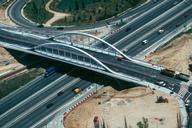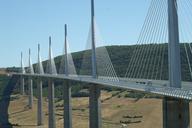Queensferry Crossing Bridge is due to open
The Queensferry Crossing Bridge in Scotland is due to open by the end of August 2017. The 2.7 km long bridge will accommodate the M 90 Motorway on four lanes and will be the world's longest stay cable bridge with three pylons. Queensferry Crossing has been built parallel to the Forth Road Bridge and to the railway bridge that was opened in 1890.
Media
The Forth Road Bridge opened in 1964 near Edinburgh is an important road connection across the Firth of Forth, the Forth River estuary into the North Sea. The 2.5 km long suspension bridge was originally planned for 11 Million vehicles per year; however, it is now being used by about 24 Million vehicles.
207 m high pylons, 180,000 t composite bridge deck
Each of the three pylons of Queensferry Crossing is 207 m high. The individual spans of the 2,055.50 m long stay cable bridge measure 104, 223, 650, 650, 223, 104 and 101.5 m. The 180,000 t composite bridge deck is made up of 110 single box precast segments, each 16.2 m long. The cast in-situ North Approach Viaduct consists of 12 single box segments with a total length of 145.80 m and approx. 60 m long pier tables on each of the pylons. In total, 150,000 t of concrete and 30,000 t of steel are used for the bridge.
To prestress the bridge deck and the central tower, DSI supplied internal bonded post-tensioning systems. The main part of the work was carried out in prefabrication sheds on site, where the prefabricated tendons were installed as transverse prestressing into the precast concrete segments. The prestressed segments were then lifted using a cable system.
The designer also used the post-tensioning system to provide the proper connection between the individual segments of the central pylon. This was achieved by inserting transverse and longitudinal tendons through the pylon and anchoring them inside the box girder. An important feature of the system is its air-tightness which was implemented according to National Scottish specifications.
About 3,000 strand tendons were used
In total, 3,000 strand tendons with flat plastic ducts and 138 strand tendons without ducts were used. Together with the main contractor, DSI supplied a system the high performance of which was confirmed by numerous tests during construction work. DSI also supported the contractor with engineering services as well as a full installation package.

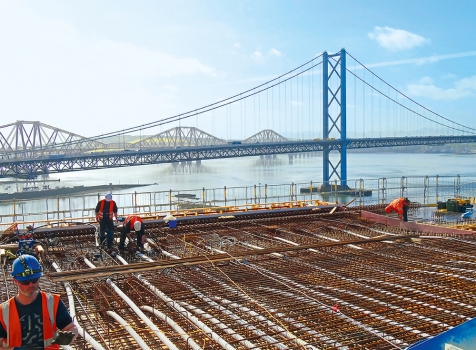
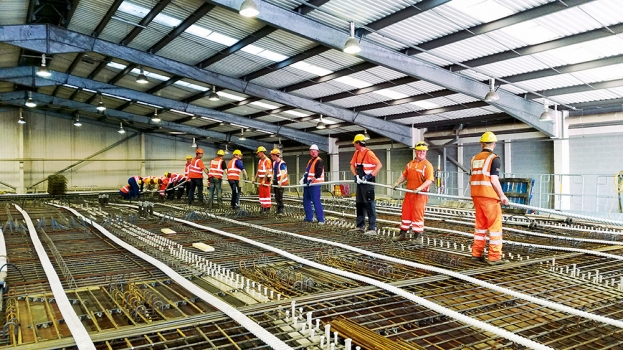
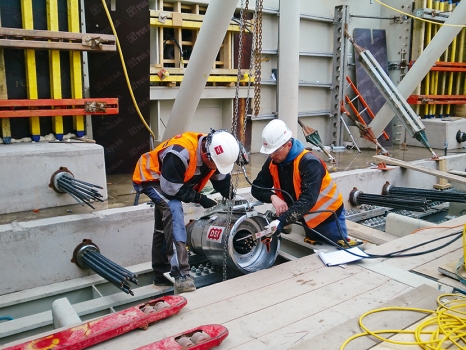
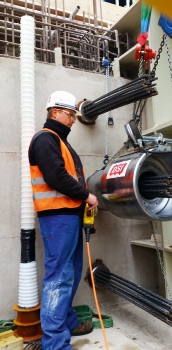
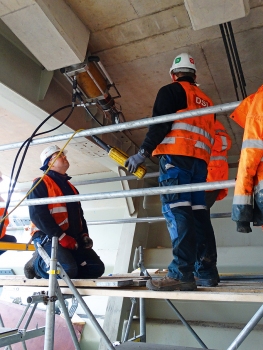
.jpg)
